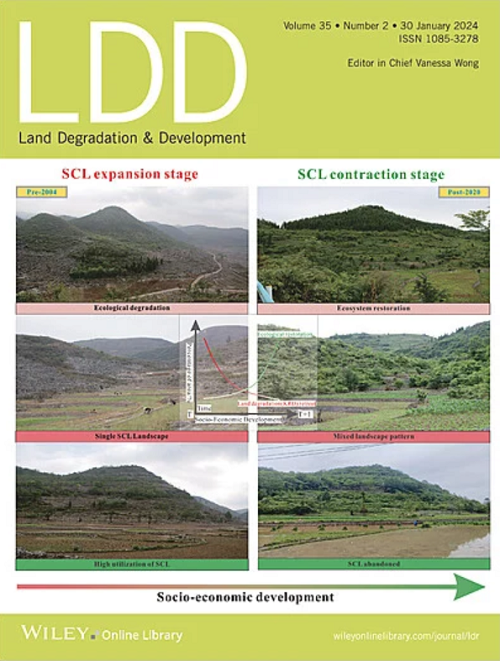Attention Convolutional Neural Networks and Long Short‐Term Memory Model: Unveiling Spatiotemporal Dynamics of Ecological Indicators in Yili Mining Area
IF 3.6
2区 农林科学
Q2 ENVIRONMENTAL SCIENCES
引用次数: 0
Abstract
Mining activities disrupt the ecosystems, causing soil erosion and landscape degradation. In this study, fractional vegetation cover (FVC), remote sensing ecological index (RSEI), and land cover (LC) were selected as indicators. The spatiotemporal variation and spatial autocorrelation were revealed by analyzing FVC, RSEI, and LC in the Yili of China. The impacts of climate conditions, human activities, and their interactions were discussed by attention convolutional neural networks (CNN) and Long Short‐Term Memory (LSTM) models. The results showed that (1) The attention CNN‐LSTM model significantly outperformed other models, achieving an accuracy of 0.734 (FVC), 0.721 (RSEI), and 0.978 (LC). (2) The model predicted the FVC and RSEI in 2024 to be 0.580 and 0.563. (3) By integrating an attention mechanism, the proposed model dynamically prioritizes critical spatiotemporal features, significantly enhancing prediction accuracy in imbalanced datasets. The findings highlight the potential of advanced deep learning frameworks for analyzing large‐scale remote sensing data.注意卷积神经网络与长短期记忆模型:揭示伊犁矿区生态指标的时空动态
采矿活动破坏了生态系统,造成土壤侵蚀和景观退化。本研究选取植被覆盖度(FVC)、遥感生态指数(RSEI)和土地覆盖(LC)作为指标。通过对伊犁地区植被覆盖度、RSEI和LC的分析,揭示了植被覆盖度的时空变化特征和空间自相关性。利用注意卷积神经网络(CNN)和长短期记忆(LSTM)模型讨论了气候条件、人类活动及其相互作用的影响。结果表明:(1)注意力CNN‐LSTM模型的准确率分别为0.734 (FVC)、0.721 (RSEI)和0.978 (LC),显著优于其他模型。(2)预测2024年FVC和RSEI分别为0.580和0.563。(3)通过集成注意机制,该模型对关键时空特征进行动态优先排序,显著提高了不平衡数据集的预测精度。研究结果强调了先进的深度学习框架在分析大规模遥感数据方面的潜力。
本文章由计算机程序翻译,如有差异,请以英文原文为准。
求助全文
约1分钟内获得全文
求助全文
来源期刊

Land Degradation & Development
农林科学-环境科学
CiteScore
7.70
自引率
8.50%
发文量
379
审稿时长
5.5 months
期刊介绍:
Land Degradation & Development is an international journal which seeks to promote rational study of the recognition, monitoring, control and rehabilitation of degradation in terrestrial environments. The journal focuses on:
- what land degradation is;
- what causes land degradation;
- the impacts of land degradation
- the scale of land degradation;
- the history, current status or future trends of land degradation;
- avoidance, mitigation and control of land degradation;
- remedial actions to rehabilitate or restore degraded land;
- sustainable land management.
 求助内容:
求助内容: 应助结果提醒方式:
应助结果提醒方式:


